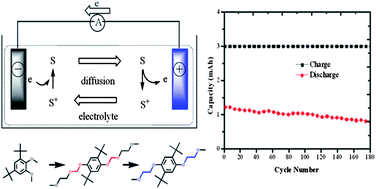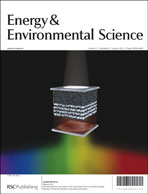Molecular engineering towards safer lithium-ion batteries: a highly stable and compatible redox shuttle for overcharge protection†
Abstract
Overcharge abuse is one of the most common and dangerous safety issues with state-of-the-art lithium-ion batteries. Thus, incorporation of overcharge prevention into the lithium-ion battery pack is key to its practical application. Redox shuttle molecules that can be reversibly oxidized and reduced at specific potentials (redox potential) provide an effective and economic method to prevent overcharge abuse for lithium-ion batteries. We have developed a novel oligo(ethylene glycol)-functionalized redox shuttle, 2,5-di-tert-butyl-1,4-bis(2-methoxyethoxy)benzene (DBBB), that is not only capable of providing efficient and long-lasting overcharge protection to lithium-ion batteries (capable of withstanding over 180 cycles of 100% overcharge at the C/2 rate), but is also compatible with the state-of-the-art lithium-ion cell system. Density functional theory calculations provided an understanding of the stability properties of this new redox shuttle.


 Please wait while we load your content...
Please wait while we load your content...